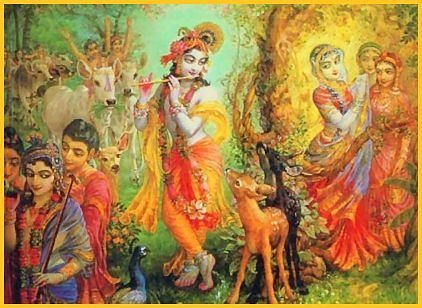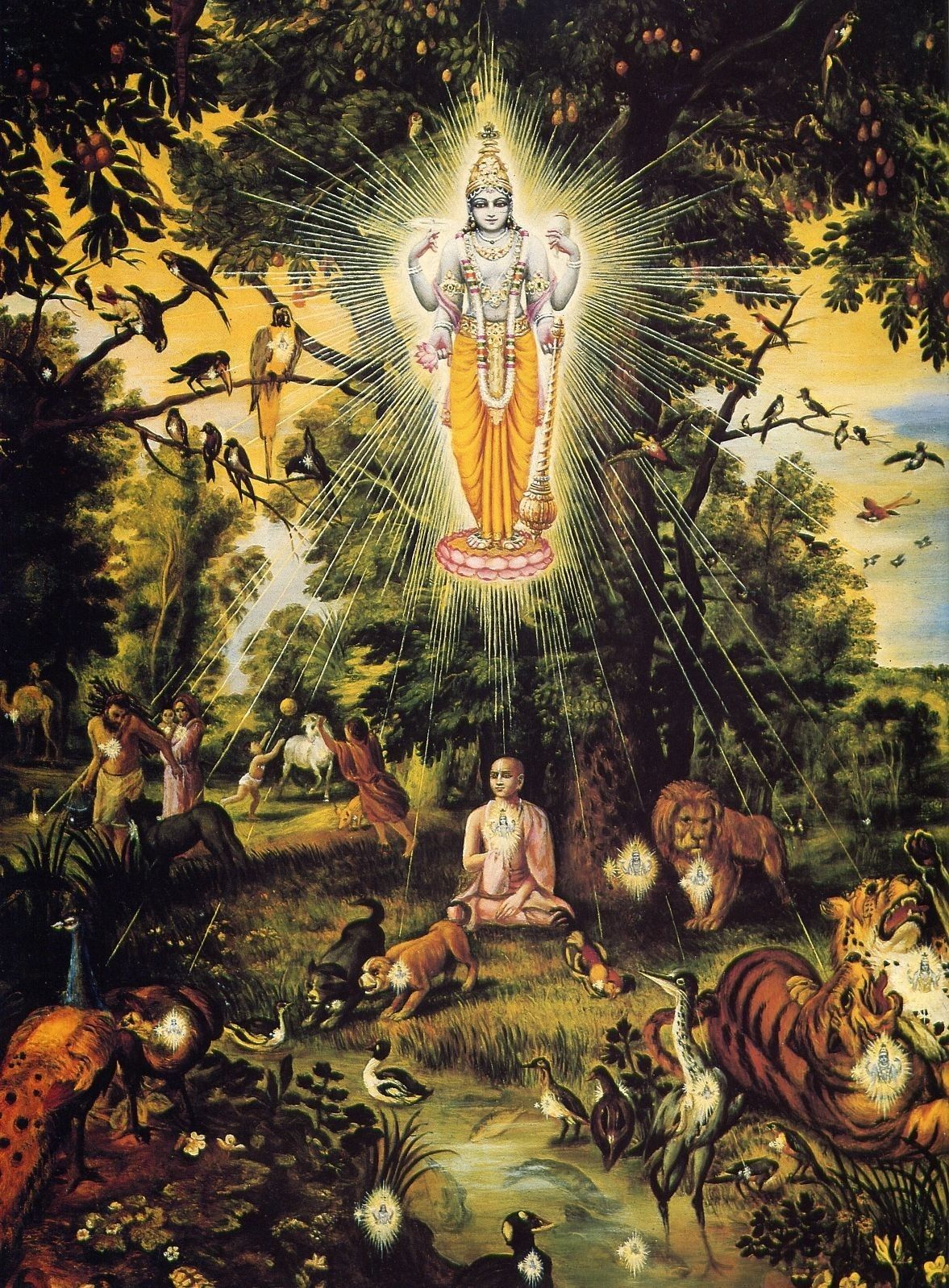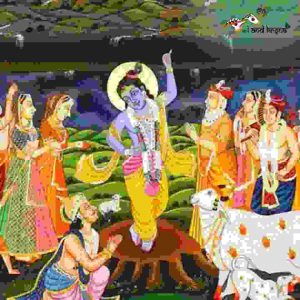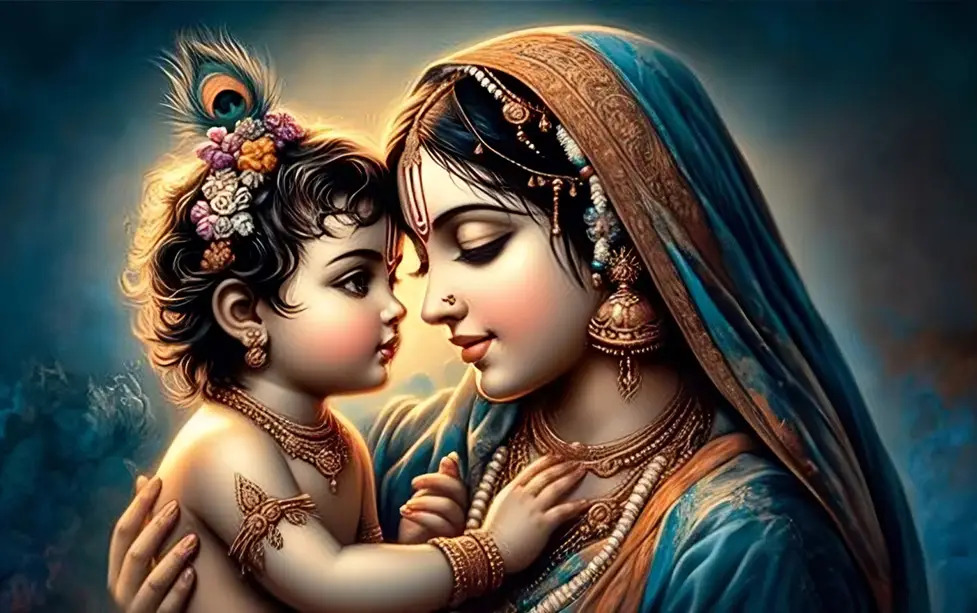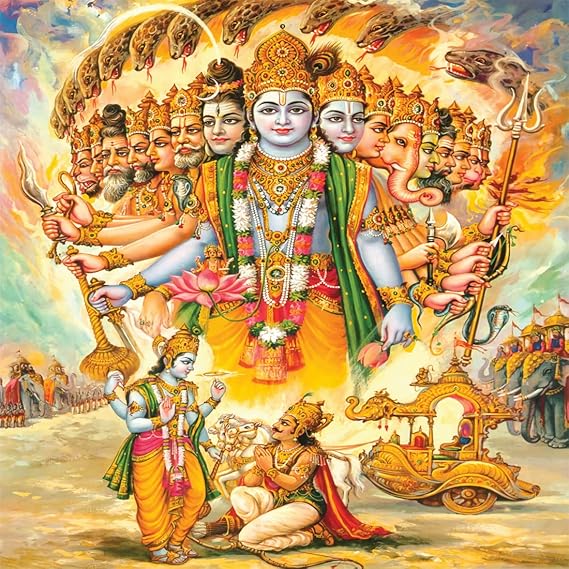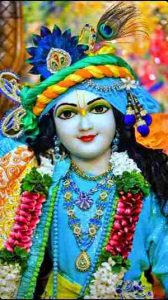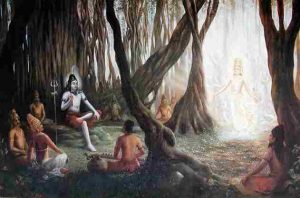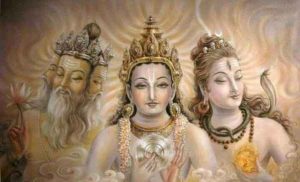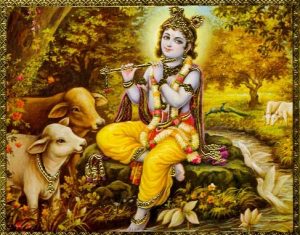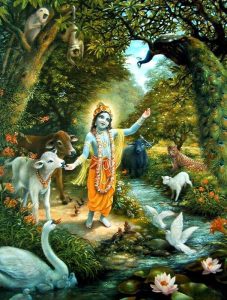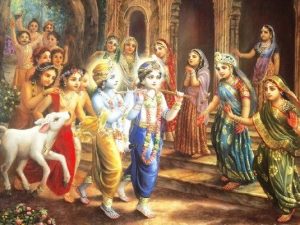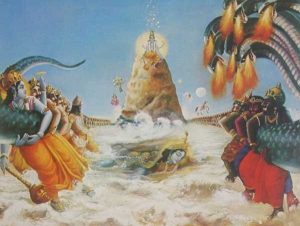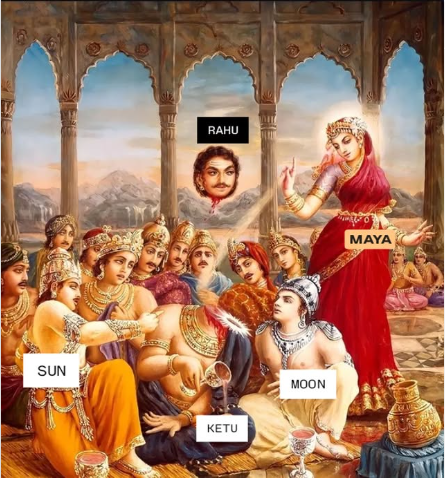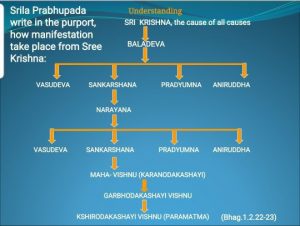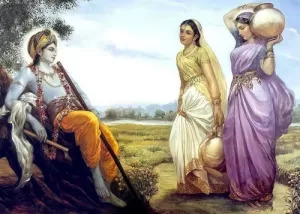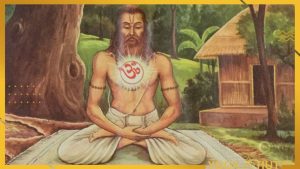Supreme Lord as the universal person.
This is the representation of the Supreme Lord as the universal person, in which the earth is His feet, the sky His navel, the sun His eyes, the wind His nostrils, the demigod of procreation His genitals, death His anus and the moon His mind. The heavenly planets are His head, the directions His ears, and the demigods protecting the various planets His many arms. The god of death is His eyebrows, shame His lower lip, greed His upper lip, delusion His smile, and moonshine His teeth, while the trees are the almighty Puruṣa’s bodily hairs, and the clouds the hair on His head. Just as one can determine the dimensions of an ordinary person of this world by measuring his various limbs, one can determine the dimensions of the Mahāpuruṣa by measuring the arrangement of the planetary systems within His universal form. Upon His chest the almighty, unborn Personality of Godhead bears the Kaustubha gem, which represents the pure spirit soul, along with the Śrīvatsa mark, which is the direct manifestation of this gem’s expansive effulgence. His flower garland is His material energy, comprising various combinations of the modes of nature. His yellow garment is the Vedic meters, and His sacred thread the syllable om composed of three sounds. In the form of His two shark-shaped earrings, the Lord carries the processes of Sāṅkhya and yoga, and His crown, bestowing fearlessness on the inhabitants of all the worlds, is the supreme position of Brahmaloka. Ananta, the Lord’s sitting place, is the unmanifest phase of material nature, and the Lord’s lotus throne is the mode of goodness, endowed with religion and knowledge. The club the Lord carries is the chief element, prāṇa, incorporating the potencies of sensory, mental and physical strength. His excellent conchshell is the element water, His Sudarśana disc the element fire, and His sword, pure as the sky, the element ether. His shield embodies the mode of ignorance, His bow, named Śārṅga, time, and His arrow-filled quiver the working sensory organs. His arrows are said to be the senses, and His chariot is the active, forceful mind.
Source: A.C. Bhaktivedanta Swami Prabhupada (2014 edition), “Srimad Bhagavatam”, Twelth Canto, Chapter 11 – Text 06 to 16.



